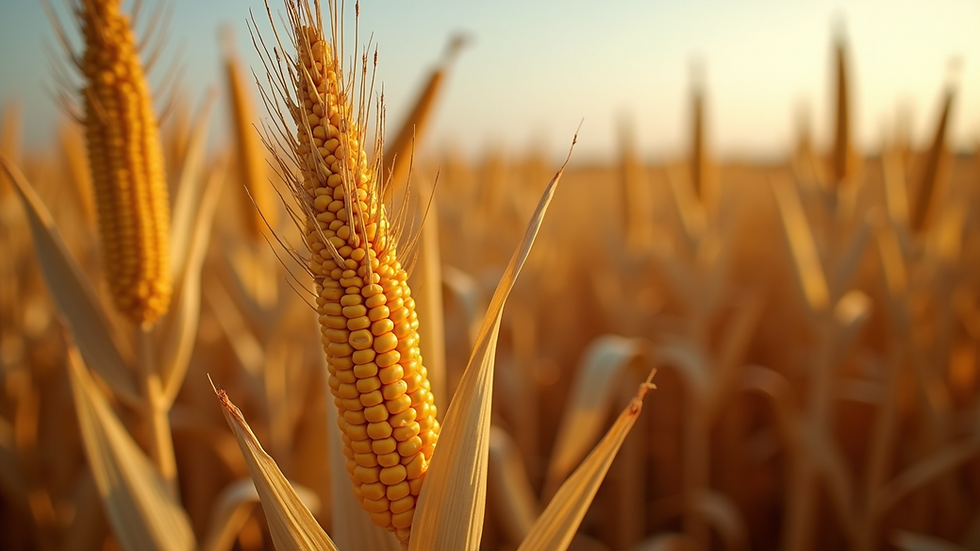Expert Guide to Sunflower Planting: Tips and Best Practices
- 粟磊 姜
- Aug 10
- 4 min read
Sunflowers are not just beautiful; they are also incredibly rewarding to grow. With their bright yellow petals and towering heights, sunflowers can transform any garden into a vibrant oasis. Whether you are a seasoned gardener or a beginner, this expert guide will provide you with essential tips and best practices for planting sunflowers successfully.
Sunflowers are known for their resilience and adaptability. They thrive in various conditions, making them a favorite among gardeners. In this guide, we will explore everything from selecting the right seeds to caring for your sunflowers as they grow.
Choosing the Right Sunflower Seeds
The first step in planting sunflowers is selecting the right seeds. There are many varieties of sunflowers, each with unique characteristics. Here are some popular types:
Giant Sunflowers: These can grow up to 12 feet tall and produce large heads filled with seeds. They are perfect for creating a dramatic focal point in your garden.
Dwarf Sunflowers: Ideal for smaller spaces, these sunflowers typically grow between 1 to 3 feet tall. They are great for containers or borders.
Multi-Branching Sunflowers: These produce multiple heads on a single plant, providing a longer blooming period and more flowers to enjoy.
When choosing seeds, consider your garden's space and the look you want to achieve.
Preparing the Soil
Sunflowers thrive in well-drained soil with plenty of nutrients. Here are some steps to prepare your soil:
Choose the Right Location: Sunflowers need full sun, so select a spot that receives at least 6 to 8 hours of sunlight daily.
Test the Soil: Use a soil test kit to check the pH level. Sunflowers prefer a pH between 6.0 and 7.5.
Amend the Soil: If your soil is lacking nutrients, consider adding compost or well-rotted manure. This will improve soil structure and provide essential nutrients.
Tilling: Loosen the soil to a depth of about 12 inches. This helps roots grow deep and strong.
Planting Sunflower Seeds
Once your soil is ready, it’s time to plant the seeds. Follow these steps for successful planting:
Timing: Plant sunflowers in the spring after the last frost. The soil temperature should be at least 55°F (13°C).
Spacing: Plant seeds about 1 to 2 inches deep and space them 6 to 12 inches apart, depending on the variety. For giant sunflowers, give them more space to grow.
Watering: Water the seeds immediately after planting. Keep the soil moist but not soggy until the seeds germinate.
Thinning: Once seedlings are about 6 inches tall, thin them out to ensure proper spacing. This helps prevent overcrowding and promotes healthy growth.
Caring for Your Sunflowers
After planting, sunflowers require some care to thrive. Here are some essential tips:
Watering: Sunflowers need about an inch of water per week. Water deeply to encourage deep root growth.
Fertilizing: Use a balanced fertilizer every 4 to 6 weeks to provide essential nutrients. Avoid over-fertilizing, as this can lead to weak stems.
Weed Control: Keep the area around your sunflowers free of weeds. Weeds compete for nutrients and water, which can hinder sunflower growth.
Pest Management: Watch for pests like aphids and beetles. Use insecticidal soap or neem oil if you notice any infestations.
Supporting Tall Sunflowers
If you are growing giant sunflowers, they may need some support as they grow tall. Here are a few methods to keep them standing strong:
Staking: Use wooden stakes or bamboo poles to support the plants. Tie the stems gently to the stakes with soft twine.
Planting in Groups: Planting sunflowers in clusters can help support each other against wind and rain.
Harvesting Sunflower Seeds
Once your sunflowers have bloomed, it’s time to think about harvesting seeds. Here’s how to do it:
Timing: Wait until the back of the sunflower head turns brown and the seeds are plump. This usually occurs in late summer or early fall.
Cutting: Use sharp scissors or pruners to cut the head off the plant, leaving a few inches of stem.
Drying: Hang the sunflower heads upside down in a cool, dry place. This allows the seeds to dry out completely.
Removing Seeds: Once dry, rub the seeds out of the head. Store them in a cool, dry place for future planting or snacking.
Common Challenges and Solutions
Growing sunflowers can come with its challenges. Here are some common issues and how to solve them:
Damping Off: This fungal disease can kill seedlings. To prevent it, ensure good air circulation and avoid overwatering.
Sunflower Moths: These pests can damage the flowers. Use row covers to protect young plants or introduce beneficial insects like ladybugs.
Fading Colors: If your sunflowers are not as vibrant, they may need more sunlight or nutrients. Ensure they are getting enough light and consider fertilizing.
Enjoying Your Sunflowers
Once your sunflowers are in full bloom, it’s time to enjoy their beauty. Here are some ways to appreciate your hard work:
Cut Flowers: Bring some sunflowers indoors to brighten your home. Cut them in the morning for the best results.
Photography: Capture the beauty of your sunflowers with photos. They make stunning subjects for photography.
Wildlife Attraction: Sunflowers attract bees, butterflies, and birds. Enjoy watching these creatures visit your garden.

Final Thoughts
Planting sunflowers can be a delightful experience. With the right seeds, soil preparation, and care, you can enjoy a stunning display of these cheerful flowers. Remember to be patient and attentive to their needs, and you will be rewarded with a beautiful garden.
Whether you are growing sunflowers for their beauty, seeds, or to attract wildlife, following these tips will help you succeed. So grab your seeds, prepare your soil, and get ready to enjoy the sunny days ahead with your sunflowers. Happy planting!



Comments